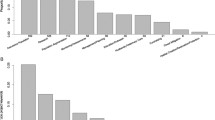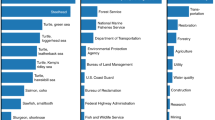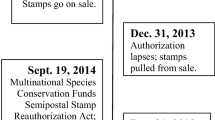Abstract
Endangered species conservation faces well-documented funding shortfalls for recovery activities, but the listing process itself is also often hampered by limited resources at the federal, state, and provincial levels. In the United States, Canada, and other jurisdictions, the number of species proposed for listing has outpaced listing decisions, creating large backlogs of candidate species. In Washington State, the Washington Department of Fish and Wildlife (WDFW) and The SeaDoc Society (SeaDoc), a nongovernmental university-based organization, entered into a unique public–private partnership to advance the state-level listing process for the tufted puffin (Fratercula cirrhata), a candidate species since 1998. Using privately-raised funds, SeaDoc hired a visiting scientist to co-author the status report with WDFW staff. This collaboration continued through editing, revising, peer review, and the public comment period, and resulted in the tufted puffin being listed as endangered in Washington. We discuss the advantages and potential pitfalls of this joint effort, as well as the broad applicability of this model in other jurisdictions with a backlog of species awaiting endangered species listing consideration.
Similar content being viewed by others
References
Conde DA, Flesness N, Colchero F, Jones OR, Scheuerlein A (2011) An emerging role of zoos to conserve biodiversity. Science 331:1390–1391
Fox J, Nino-Murcia A (2005) Status of species conservation banking in the United States. Conserv Biol 19:996–1007
FWS (2014) Endangered and threatened wildlife and plants; review of native species that are candidates for listing as endangered or threatened; annual notice of findings on resubmitted petitions; annual description of progress on listing actions; proposed rule. Fed Reg 79(234):72450–72497
FWS (2015) Endangered Species Act petitions received by Fish and Wildlife Service. United States Fish and Wildlife Service, Washington, D. C., USA, https://ecos.fws.gov/ecp/report/table/petitions-received.html. Accessed 5 Jan 2016
Gaydos J (2005) Summary meeting notes—2005 Puget Sound seabird and seaduck research meeting. The SeaDoc Society, Eastsound
George S, Snape W III (2010) State endangered species acts. In: Bauer DC, Irvin WM (eds) Endangered species act: law, policy, and perspectives. American Bar Association, Chicago, pp 345–359
Gibbs KE, Curie DJ (2012) Protecting endangered species: do the main legislative tools work? PLoS ONE. doi:10.1371/journal.pone.0035730
Greenwald DN, Suckling KF, Taylor M (2005) The listing record. In: Goble DD, Scott JM, Davis FW (eds) The endangered species act at thirty: renewing the conservation promise. Island Press, Washington, pp 51–76
Groves CR, Klein ML, Breden TF (1995) Natural heritage programs: public-private partnerships for biodiversity conservation. Wildlife Soc Bull 23:784–790
Hanson T, Wiles GJ (2015) Washington state status report for the Tufted Puffin. Washington Department of Fish and Wildlife, Olympia
Kershaw JD, Hottle D, St. Martin M, Sandoval G (2015) Successful conservation partnership keeps bi-state sage-grouse off endangered species list. United States Fish and Wildlife Service, Washington, D. C., USA http://www.fws.gov/news/ShowNews.cfm?ID=DD5B828A-EFD6-2D90-B779A121E74DD059. Accessed 15 Aug 2015
McCarthy DP, Donald PF, Scharlemann JPW, Buchanan GM, Balmford A, Green JMH, Bennun LA, Burgess ND, Fishpool LDC, Garnett ST, Leonard DL, Maloney RJ, Morling P, Schaefer HM, Symes A, Wiedensfeld DA, Butchart SHM (2012) Financial costs of meeting global biodiversity targets: current spending and unmet needs. Science 338:946–949
Miller JK, Scott JM, Miller CP, Waits LP (2002) The endangered species act: dollars and sense? BioScience 52:163–168
Otto SP (2015) Biodiversity protects; species loss endangers all of us. Altern J 41:21–25
Scharpf C (2000) Politics, science, and the fate of the Alabama sturgeon. Am Curr 26:6–14
Schultz CB, Gerber LR (2002) Are recovery plans improving with practice? Ecol Appl 12:641–647
Schwartz MW (2008) The performance of the endangered species act. Ann Rev Ecol Evol Syst 39:279–299
Stokstad E (2005) What’s wrong with the endangered species act? Science 309:2150–2152
Taylor MF, Suckling JKF, Rachlinski JJ (2005) The effectiveness of the endangered species act: a quantitative analysis. BioScience 55:360–367
WAC (Washington Administrative Code) 232-12-297 (2015). Washington State Legislature, Olympia, WA. http://apps.leg.wa.gov/wac/default.aspx?cite=232-12-297. Accessed 15 Aug 2015
Watson JEM, Bottrill MC, Walsh JC, Joseph LN, Possingham, HP (2010) Evaluating threatened species recovery planning in Australia. Prepared on behalf of the Department of the Environment, Water, Heritage and the Arts by the Spatial Ecology Laboratory, University of Queensland, Brisbane
Acknowledgments
The authors thank P. Becker, H. Allen, and one anonymous reviewer for helpful comments that improved the manuscript. SeaDoc thanks the private citizens that enabled the writing of the status review, especially K. Allen, A. Azous, G. Georges, R. and P. Henigson, K. and G. Keeler, R. Lundeen, K. and R. McDowell, and E. Snyder. WDFW funding through sales of Washington’s personalized license plates and the state’s background license plate for endangered species also contributed to this project.
Author information
Authors and Affiliations
Corresponding author
Additional information
Communicated by David Hawksworth.
Rights and permissions
About this article
Cite this article
Hanson, T., Wiles, G.J. & Gaydos, J.K. A novel public–private partnership model for improving the listing of endangered species. Biodivers Conserv 25, 193–198 (2016). https://doi.org/10.1007/s10531-016-1048-3
Received:
Revised:
Accepted:
Published:
Issue Date:
DOI: https://doi.org/10.1007/s10531-016-1048-3




